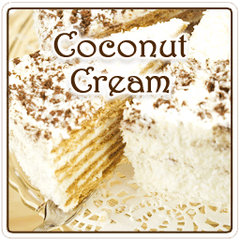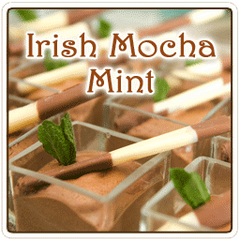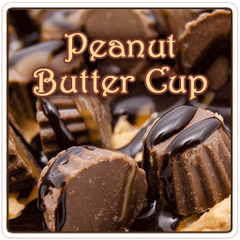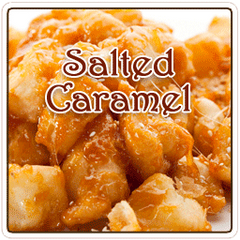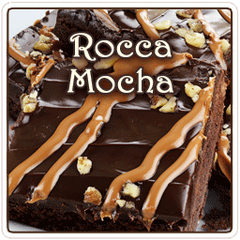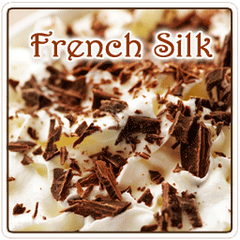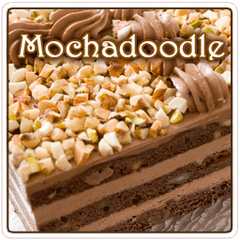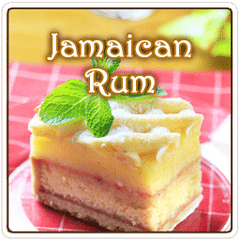African Coffee
Africa/Arabia
Yemen
Mocha is one of the more confusing terms in the coffee lexicon. The coffee we call Mocha today is grown as it has been for hundreds of years in the mountains of Yemen, at the southwestern tip of the Arabian Peninsula. It was originally shipped through the ancient port of Mocha, which has since seen its harbor blocked by a sandbar. The name Mocha has become so permanently a part of the world's coffee vocabulary that it stubbornly sticks to a coffee that today would be described more accurately as Yemen or even Arabian.
The other ambiguity derives from the famed chocolate aftertaste of Arabian Mocha, which caused an enthusiast to use the same name for the traditional mixture of hot chocolate and coffee. So the term Mocha is an old-fashioned nickname for coffee, a common name for coffee from Yemen, and the name of a drink made up of coffee and hot chocolate in equal parts.
Aside from the wild coffees of Ethiopia, Arabian Mocha is the most ancient and traditional of coffees and still one of the best. It is the bean that literally sold the world on coffee. The true Arabian Mocha, from North Yemen, is still grown as it probably was over a thousand years ago, on irrigated terraces clinging to the sides of semiarid mountains; water is directed through little rock-lined channels to the roots of the plants, which are shaded from the desert sun by rows of poplars. The beans are also processed as they have been for centuries; even the best grades (Mocha Extra) are natural coffees, dried with the fruit still attached to the beans. The dried husk is later removed by millstone or other primitive methods, which accounts for the rough, irregular look of the beans. The names in Yemen coffee are also irregular; no two authorities agree as to whether they properly indicate grade, district, or variety of bean. Of the market names that most often appear on the lists of American specialty stores, Mattari usually represents a more acidy, winey version of the Mocha style than the lower-toned, more balanced Sanani.
The best coffees of Arabia and Ethiopia, and some from Kenya and Tanzania, are the most distinctively flavored coffees in the world. The acidity leaves an unmistakable dry, winelike aftertaste on the palate. If the coffees of Mexico can be compared with dry white wines, Mochas and Ethiopians are the Bordeaux of the coffee world. In addition to its rich winey quality, Mocha has its own particular flavor note, which some people, with more imagination than accuracy, I believe, associate with chocolate. Don't be disappointed if it doesn't taste like hot fudge. Rather, it is a peculiar rich edge to the aftertaste that lurks very clearly but subtly behind the winey acidity. The stronger you make the coffee, the more clearly you will taste the "chocolate" flavor.
Since Mocha is such a distinctive coffee, everyone has something interesting to say about it: unique, sharp flavor; mellow body; creamy, rich, distinctive winey flavor. Despite its distinctiveness, I find Mocha a very balanced coffee, with a medium to full body, good but not overwhelming acidity, and a rich flavor with those tantalizing chocolate undertones. The aroma is overwhelming and delicious, heady with winey and acidy notes. Mocha is a fine coffee: If you can find the real thing, try some. It is also an excellent alternative for those who wish a coffee grown without chemicals. Yemen Mocha is as organic as it was over a thousand years ago when the first trees from Ethiopia were established.
Ethiopia
Coffee was first cultivated in Yemen, but the arabica tree originated across the Red Sea in Ethiopia, on the mountain plateaus where tribespeople still harvest the wild berries. Ethiopian coffees are now among the world's most varied and distinctive, and at least one, Yirgacheffe, ranks among the best. All display the winey or fruity acidity characteristic of African and Arabian coffees, but they play a rich range of variations on this theme.
The Harrar coffees are the most widely available of fancy Ethiopian coffees. They are grown on small peasant plots and farms in the Eastern part of the country near the old capital of Harrar, at about 5,000 to 6,000 feet. You may see these coffees called longberry Harrar (large bean), shortberry Harrar (smaller bean), or Mocha Harrar (peaberry, or single bean). The Harrar may become Harari, Harer, or Harar. In Great Britain, Harrar is sold as Mocha, adding to the confusion surrounding that abused term. Some retailers cover both bases by calling this coffee Mocha Harrar. Like Yemen Mocha, Harrar is a "handmade" coffee, processed carefully by the traditional dry method. It is grown on such a small scale and by such simple methods that it is almost certainly free of chemicals, and like Yemen Mocha a good choice for those who wish a traditional organically grown coffee.
Ethiopian Harrar can range from an extremely rough, winey coffee, gamey and light-bodied, to a coffee in which the wine quality becomes rich, fragrant, and fruit-like, and the body heavier, much like the best Yemen Mochas. Differences in quality of preparation probably have much to do with these variations.
Washed coffees from the western part of Ethiopia, usually sold as Ghimbi or Gimbi, share the pronounced winey tones of the Harrar coffees, but at best envelop them in a richer, more balanced profile and somewhat heavier, longer- finishing body.
The washed coffees of southern Ethiopia exhibit related but different flavor tendencies. These coffees may show little sign of the characteristic gamey and winey qualities of their compatriot coffees. Instead they tend to be gentle, and the wine tones turn distinctly fruit-like and flowery. They may appear in specialty stores described either by the district in which they're produced (Sidamo, Washed Sidamo), or by terms like Ethiopian Fancies or Ethiopian Estate Grown. The most celebrated of these coffees is called Yirgacheffe or Yrgacheffe. This coffee virtually has a cult following in the United States, and for good reason. Like the best Sumatran and Yemen coffees it is rich, teasing, and mysterious on the palate, with a very long, resonant finish. Like Sumatran, its acidity vibrates inside the richness of the body, but Yirgacheffe adds a soft, fragrant, flowery note so distinctive that it may make this the most unique among the world's coffees.
The recent terrifying misfortunes of the Ethiopian people, including drought, famine, and civil war, have reduced the availability of all Ethiopian coffees, particularly the washed varieties. Those Ethiopian coffees that do make it to the store bins will probably be expensive, but still worth every penny.
Kenya
Although Kenya is only a few hundred miles south of Ethiopia and Yemen, coffee growing came late here. The native Kenyans have taken up what the British started, and made their coffee industry even more modern and efficient than the Colombian. The coffee is raised both on small peasant plots and on larger plantations.
The main growing area stretches south from the slopes of 17,000-foot Mt. Kenya almost to the capital, Nairobi. There is a smaller coffee-growing region on the slopes of Mt. Elgon, on the border between Uganda and Kenya. Most Kenyan coffee sold in specialty stores appears to come from the central region around Mt. Kenya and is sometimes qualified with the name of the capital city, Nairobi. Grade designates the size of the bean; AA is largest, followed by A and B.
Kenyan, like the Arabian Mocha and the Ethiopian Harrar to the north, has a distinctive dry, winey aftertaste. At its best, however, it has a full-bodied richness that Ethiopian and even Mocha lack. Furthermore, it is improving, as growers respond to government incentives encouraging quality. This is a fine coffee for those who like the striking and unusual, not so winey as Ethiopian Harrar, fuller-bodied but more intense than Yemen Mocha.
Tanzania
The coffee industry of Tanzania initially was closely tied to that of Kenya, since early in their national histories they shared exploiters: first the Germans, then the British. Over the last decade the Tanzanian coffee industry has languished, however, while the Kenyan continues to improve and prosper.
Most Tanzanian arabicas are grown on the slopes of Mt. Kilimanjaro and Mt. Meru, near the Kenyan border. These coffees are called Kilimanjaro or sometimes Moshi or Arusha after the main towns and shipping points. Smaller amounts of arabica are grown much farther south, between Lake Tanganyika and Lake Nyasa, and are usually called Mbeya, after one of the principal towns, or Pare, a market name. In all cases, the highest grade is AA, followed by A and B.
Most Tanzanian coffees share the characteristically sharp, winey acidity typical of African and Arabian coffees. They tend to be medium- to full-bodied and fairly rich in flavor.
Uganda
The main part of the Uganda coffee production is robusta, used in instant coffees and inexpensive commercial blends. Uganda does produce one excellent arabica, however: Bugishu or Bugisu, from the western slopes of Mt. Elgon, on the Kenya border. It is another typically winey African coffee, close to Kenyan coffees in flavor but usually lighter in body.
Zimbabwe
Zimbabwe, formerly Rhodesia, has been exporting an excellent coffee to the United States in recent years. It is a washed coffee grown on medium-sized farms, and still another variant on the acidy, winey-toned coffees of East Africa. Some importers rank Zimbabwe with the best Kenyan coffees. Samples I have tasted were not so full-bodied or rich, but Zimbabwe is a fine and improving African-style coffee.
